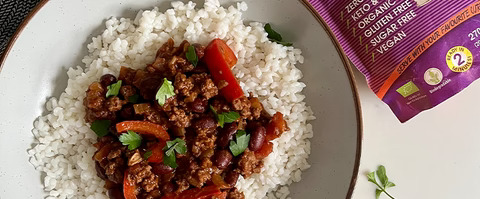When it comes to choosing the right type of rice for a healthy diet, the debate often boils down to konjac rice versus regular rice. Both types of rice have their unique benefits, but which one is truly better for your diet? In this blog, we will explore the nutritional differences, health benefits, and potential drawbacks of konjac rice and regular rice, helping you make an informed choice for your dietary needs.
What is Konjac Rice?
Konjac rice, also known as shirataki rice, is made from the root of the konjac plant, which is native to Asia. The main component of konjac rice is glucomannan, a type of soluble fiber. This unique composition gives konjac rice its distinctive characteristics and health benefits, particularly as a low calorie food.
Nutritional Comparison
Calories and Carbohydrates
One of the primary reasons people opt for konjac rice is its extremely low calorie and carbohydrate content.
- Konjac Rice: A typical serving of konjac rice contains only about 10 calories and less than 1 gram of carbohydrates. This makes it an excellent choice for those on low-calorie or low-carb diets.
- Regular Rice: In contrast, a typical serving of white rice contains around 200 calories and 45 grams of carbohydrates. Brown rice, while slightly more nutritious, still contains about 215 calories and 45 grams of carbohydrates per serving.
Fiber Content
Konjac rice is rich in soluble fiber, thanks to its glucomannan content:
- Konjac Rice: The high fiber content in konjac rice promotes satiety, helps regulate blood sugar levels, and supports digestive health.
- Regular Rice: Brown rice offers about 3.5 grams of fiber per serving, which is beneficial for digestion. White rice, however, has very little fiber.
Nutrient Density
Regular rice, particularly brown rice, is a source of essential nutrients such as magnesium, phosphorus, selenium, manganese, and B vitamins. Konjac rice, while lower in these nutrients, can be supplemented with other nutrient-dense foods to ensure a balanced diet.
Health Benefits of Konjac Rice
Weight Management
The low calorie and high fiber content of konjac rice make it an excellent choice for weight management. By substituting regular rice with konjac rice, you can significantly reduce your calorie intake without feeling deprived, aiding in weight loss and maintenance.
Digestive Health
The glucomannan fiber in konjac rice supports digestive health by adding bulk to the stool and promoting regular bowel movements. This can help prevent constipation and improve overall digestive function.
Blood Sugar Control
For individuals with diabetes or those looking to maintain steady blood sugar levels, konjac rice can be a beneficial addition to the diet. The fiber content helps slow the absorption of sugar, preventing spikes in blood sugar levels after meals.
Read more about How Do You Prepare Konjac Noodles?
Health Benefits of Regular Rice
Nutrient-Rich
Brown rice, in particular, is rich in essential nutrients such as magnesium, phosphorus, and B vitamins. These nutrients are vital for energy production, bone health, and overall well-being.
Energy Source
Regular rice, especially white rice, is a quick source of energy due to its high carbohydrate content. It can be particularly beneficial for athletes or individuals who need a rapid energy boost.
Potential Drawbacks
Konjac Rice
- Nutrient Deficiency: While konjac rice is excellent for weight management and digestive health, it lacks essential nutrients found in regular rice. It’s important to pair konjac rice with other nutrient-dense foods to ensure a balanced diet.
Regular Rice
- High Calorie and Carb Content: Regular rice, particularly white rice, is high in calories and carbohydrates, which can contribute to weight gain and blood sugar spikes if consumed in large quantities.
Incorporating Konjac Rice into Your Diet
Low Calorie Food Options
Konjac rice can be used in a variety of dishes to create satisfying, low calorie meals. Here are some ideas:
- Stir-Fries: Use konjac rice as a base for vegetable and lean protein stir-fries. The rice will absorb the flavors of the sauce and ingredients, providing a satisfying and low-calorie meal.
- Salads: Add konjac rice to salads for extra volume and texture without adding many calories.
- Soups: Incorporate konjac rice into soups for a filling and low-calorie addition.
Pairing with Low Calorie Noodles
Konjac noodles are another great option for creating low calorie meals. Similar to konjac rice, these noodles are made from the konjac root and have the same low-calorie and high-fiber benefits. Here are some ways to enjoy them:
- Noodle Bowls: Create delicious noodle bowls with konjac noodles, fresh vegetables, lean protein, and a flavorful broth or sauce.
- Pasta Alternatives: Use konjac noodles as a substitute for traditional pasta in your favorite dishes, reducing calories and carbohydrates while still enjoying a hearty meal.
Conclusion
When comparing konjac rice to regular rice, it’s clear that each has its own set of benefits. Konjac rice is ideal for those looking to manage their weight and improve digestive health due to its low calorie and high fiber content. On the other hand, regular rice, especially brown rice, provides essential nutrients and a quick energy source.










